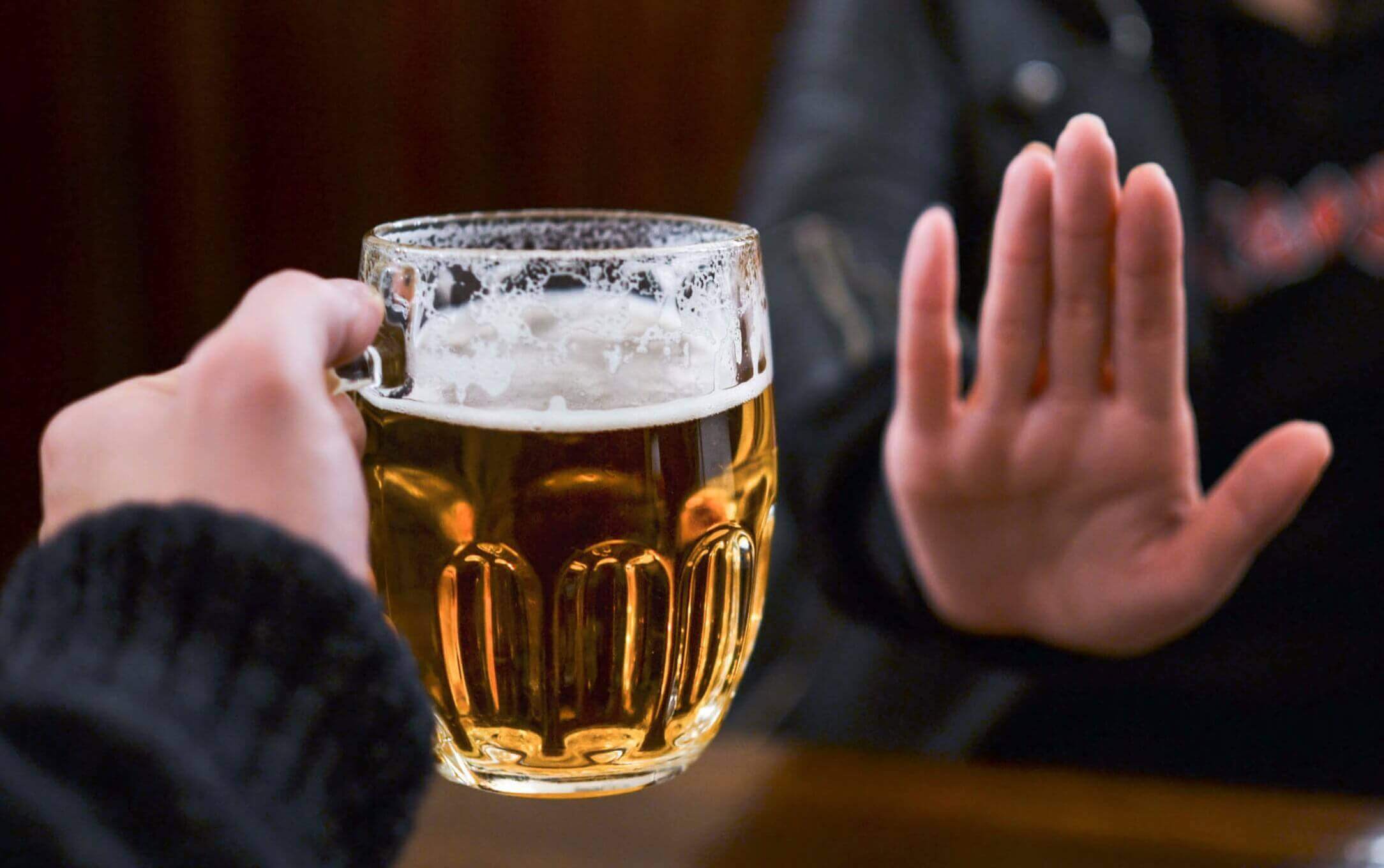Alcohol Consumption in Teenagers: What You Should Know


Written and verified by the nutritionist Silvia Zaragoza
Did you know that alcohol is the most consumed substance among teenagers from 14 to 18 years old? Besides, younger teenagers (between 12 and 13) are starting to drink alcohol, nowadays. Even though we’re all familiar with the health risks that it entails, people accept alcohol consumption in teenagers for leisure reasons or to initiate social relations.
According to the National Institute on Alcohol Abuse and Alcoholism (NIAAA), 30% of youngsters practice binge drinking. This practice consists of having 4 or 5 drinks in a 2-hour period.
It’s important to bear this in mind, since it could lead to alcoholism when they become adults. Another possible risk is having an alcohol induced coma and affecting their lung capacity, which could lead to death, if not treated immediately.
First of all, you should know that alcohol is a compound soluble in fat. The stomach and intestine absorb it and then it’s metabolized by the liver. It also goes through the blood-brain barrier. That’s why neurological symptoms are the most common ones.

Memory loss, a long-term effect of alcohol consumption in teenagers
Since alcohol is neurotoxic and teenagers are still developing their brain functions, it’s not advisable for them to consume it. Alcohol damages the hippocampus, which relates to memory and learning. This is why short-term memories get lost and it becomes harder to concentrate; alcohol reduces the number of neurons.
There’s also evidence that relates alcohol to Alzheimer’s disease, because it’s inflammatory and favors the formation of amyloid beta deposits.
Moreover, while alcohol is in the blood, there’s an increase in coordination loss and slowness.
How does alcohol consumption affect mood?
Another effect of alcohol consumption is the release of endorphins, which produce short-term euphoria. Plus, it activates the area of the brain that relates to pleasure, by releasing dopamine. As a result, it causes dependency and effects that we’ll describe next.
Furthermore, it may induce depression, although there’s no evidence on which comes first.
As a consequence, it causes irritability and may lead to suicide. This affects social relations among family and friends.
Effects of alcohol consumption in teenagers
It’s not over once they stop drinking. The next day, they may feel tired and have a headache. The main reason is that it takes several hours for the body to eliminate alcohol, which is responsible for blocking the DAO enzyme (diamine oxidase).
This enzyme eliminates histamine, which benefits neural transmission, gastric secretion and bowel movement. However, too much of it may be harmful and cause migraine. It also regulates sleep, and thus affects rest.
In addition, alcohol causes digestive problems, such as nausea or vomit. This will depend on the amount consumed, the time they spent drinking and the food they may have eaten. In the long term, it irritates the gastrointestinal wall and it may cause ulcers or gastritis.

These symptoms show the existing relation between alcohol and different types of cancer in the digestive system, such as esophagus, colon, stomach, pharynx or pancreatic cancer.
How can they avoid alcohol?
In conclusion, they need to be aware that there’s no proper amount of alcohol consumption. It’s important to talk to them and set an example so they don’t think of it as an everyday habit. Even if it doesn’t look like it, we’re talking about a drug that causes addiction, and that’s hard to get away from.
Also, as parents, you can teach them that they can turn down their friend’s invitation and choose to drink something else, no matter what their friends think. In the end, there are many ways of having a good time without drinking alcohol.
Did you know that alcohol is the most consumed substance among teenagers from 14 to 18 years old? Besides, younger teenagers (between 12 and 13) are starting to drink alcohol, nowadays. Even though we’re all familiar with the health risks that it entails, people accept alcohol consumption in teenagers for leisure reasons or to initiate social relations.
According to the National Institute on Alcohol Abuse and Alcoholism (NIAAA), 30% of youngsters practice binge drinking. This practice consists of having 4 or 5 drinks in a 2-hour period.
It’s important to bear this in mind, since it could lead to alcoholism when they become adults. Another possible risk is having an alcohol induced coma and affecting their lung capacity, which could lead to death, if not treated immediately.
First of all, you should know that alcohol is a compound soluble in fat. The stomach and intestine absorb it and then it’s metabolized by the liver. It also goes through the blood-brain barrier. That’s why neurological symptoms are the most common ones.

Memory loss, a long-term effect of alcohol consumption in teenagers
Since alcohol is neurotoxic and teenagers are still developing their brain functions, it’s not advisable for them to consume it. Alcohol damages the hippocampus, which relates to memory and learning. This is why short-term memories get lost and it becomes harder to concentrate; alcohol reduces the number of neurons.
There’s also evidence that relates alcohol to Alzheimer’s disease, because it’s inflammatory and favors the formation of amyloid beta deposits.
Moreover, while alcohol is in the blood, there’s an increase in coordination loss and slowness.
How does alcohol consumption affect mood?
Another effect of alcohol consumption is the release of endorphins, which produce short-term euphoria. Plus, it activates the area of the brain that relates to pleasure, by releasing dopamine. As a result, it causes dependency and effects that we’ll describe next.
Furthermore, it may induce depression, although there’s no evidence on which comes first.
As a consequence, it causes irritability and may lead to suicide. This affects social relations among family and friends.
Effects of alcohol consumption in teenagers
It’s not over once they stop drinking. The next day, they may feel tired and have a headache. The main reason is that it takes several hours for the body to eliminate alcohol, which is responsible for blocking the DAO enzyme (diamine oxidase).
This enzyme eliminates histamine, which benefits neural transmission, gastric secretion and bowel movement. However, too much of it may be harmful and cause migraine. It also regulates sleep, and thus affects rest.
In addition, alcohol causes digestive problems, such as nausea or vomit. This will depend on the amount consumed, the time they spent drinking and the food they may have eaten. In the long term, it irritates the gastrointestinal wall and it may cause ulcers or gastritis.

These symptoms show the existing relation between alcohol and different types of cancer in the digestive system, such as esophagus, colon, stomach, pharynx or pancreatic cancer.
How can they avoid alcohol?
In conclusion, they need to be aware that there’s no proper amount of alcohol consumption. It’s important to talk to them and set an example so they don’t think of it as an everyday habit. Even if it doesn’t look like it, we’re talking about a drug that causes addiction, and that’s hard to get away from.
Also, as parents, you can teach them that they can turn down their friend’s invitation and choose to drink something else, no matter what their friends think. In the end, there are many ways of having a good time without drinking alcohol.
All cited sources were thoroughly reviewed by our team to ensure their quality, reliability, currency, and validity. The bibliography of this article was considered reliable and of academic or scientific accuracy.
- F Garcia, O; Serra, E; Zacares, JJ; Calafat, A; Garcia, F (2020) Alcohol use and abuse and motivations for drinking and non-drinking among Spanish adolescents: do we know enough when we know parenting style? Psychol health, 35(6): 645-64.
- W. Zeigler, D; C. Wang, C; M.D., A. Yoast, R; D. Dickinson, B; McCaffree, M A; B. Robinowitz, C (2005) The neurocognitive effects of alcohol on adolescents and college students. El Sevier, 40: 23-32.
- M Silveri, M; D Dager, A; E Cohen-Gilbert, J; T Sneider, J (2016) Neurobiological signatures associated with alcohol and drug use in the human adolescent brain. Neurosci Biobehav Rev, 70: 244-59.
- Tapia-Rojas, C; G Mira, R; K Torres, A; Jara, C; Pérez, MJ; H Vergara, E et al (2017) Alcohol consumption during adolescence: A link between mitochondrial damage and ethanol brain intoxication. Birth Defects Res, 109(20): 1623-39.
- Leung, J; Chiu, V; P Connor, J; Peacock, A; B Kelly,A ; Hall, W et al (2019) Alcohol consumption and consequences in adolescents in 68 low and middle-income countries – a multi-country comparison of risks by sex. Drug Alcohol Depend, 205.
- PUIGCORBÉ, S., BRUGAL, M. T., TEIXIDÓ-COMPAÑÓ, E. S. T. E. R., BOSQUE-PROUS, M. A. R. I. N. A., ESPELT, A., SORDO, L., … & BARRIO, G. (2019). Individual and contextual factors related to binge drinking among adolescents in Spain: a multilevel approach. Adicciones, 31(1). https://pubmed.ncbi.nlm.nih.gov/29353297/
- Venkataraman, A., Kalk, N., Sewell, G., Ritchie, C. W., & Lingford-Hughes, A. (2017). Alcohol and Alzheimer’s Disease—Does Alcohol Dependence Contribute to Beta-Amyloid Deposition, Neuroinflammation and Neurodegeneration in Alzheimer’s Disease?. Alcohol and Alcoholism, 52(2), 151-158. https://pubmed.ncbi.nlm.nih.gov/27915236/
- Deady, M., Mills, K. L., Teesson, M., & Kay-Lambkin, F. (2016). An online intervention for co-occurring depression and problematic alcohol use in young people: primary outcomes from a randomized controlled trial. Journal of medical Internet research, 18(3), e71. https://pubmed.ncbi.nlm.nih.gov/27009465/
- Manzotti, G., Breda, D., Di Gioacchino, M., & Burastero, S. E. (2016). Serum diamine oxidase activity in patients with histamine intolerance. International journal of immunopathology and pharmacology, 29(1), 105-111. https://pubmed.ncbi.nlm.nih.gov/26574488/
This text is provided for informational purposes only and does not replace consultation with a professional. If in doubt, consult your specialist.








